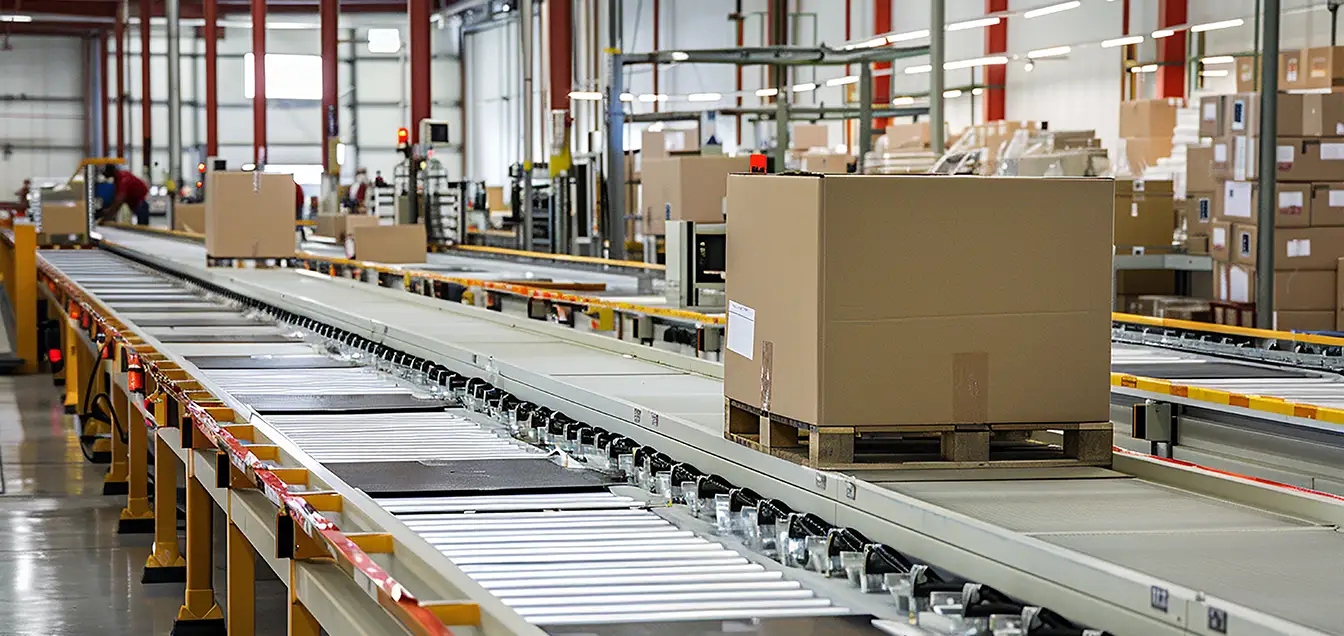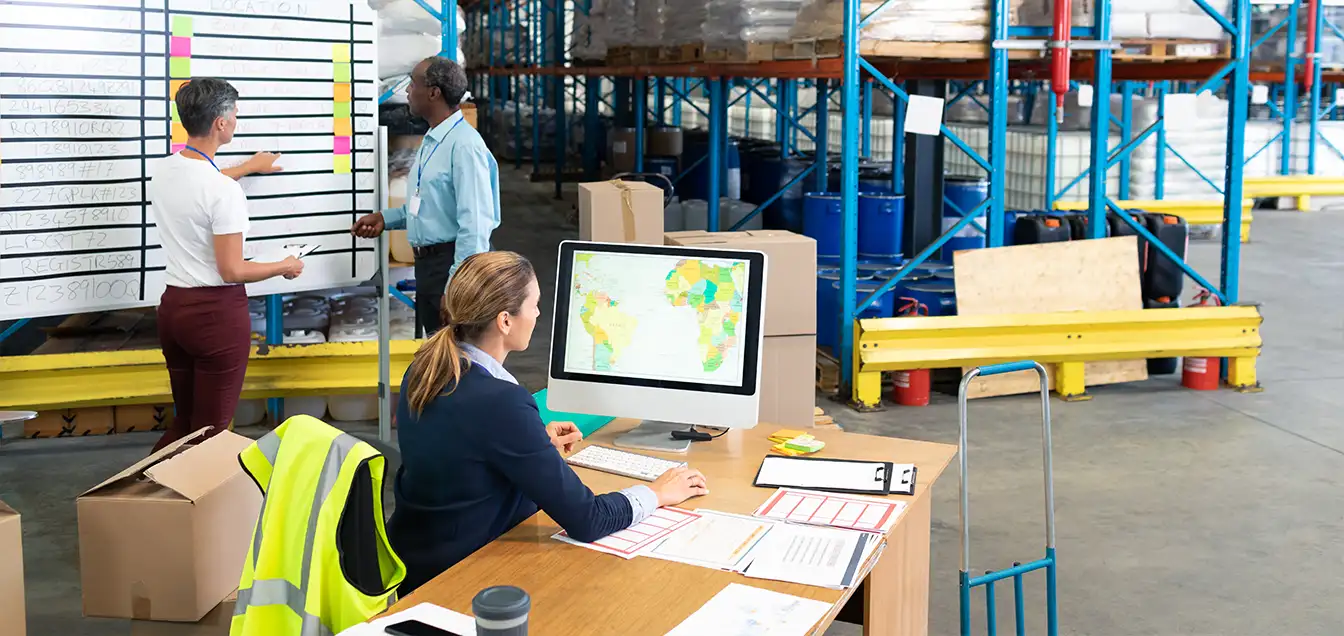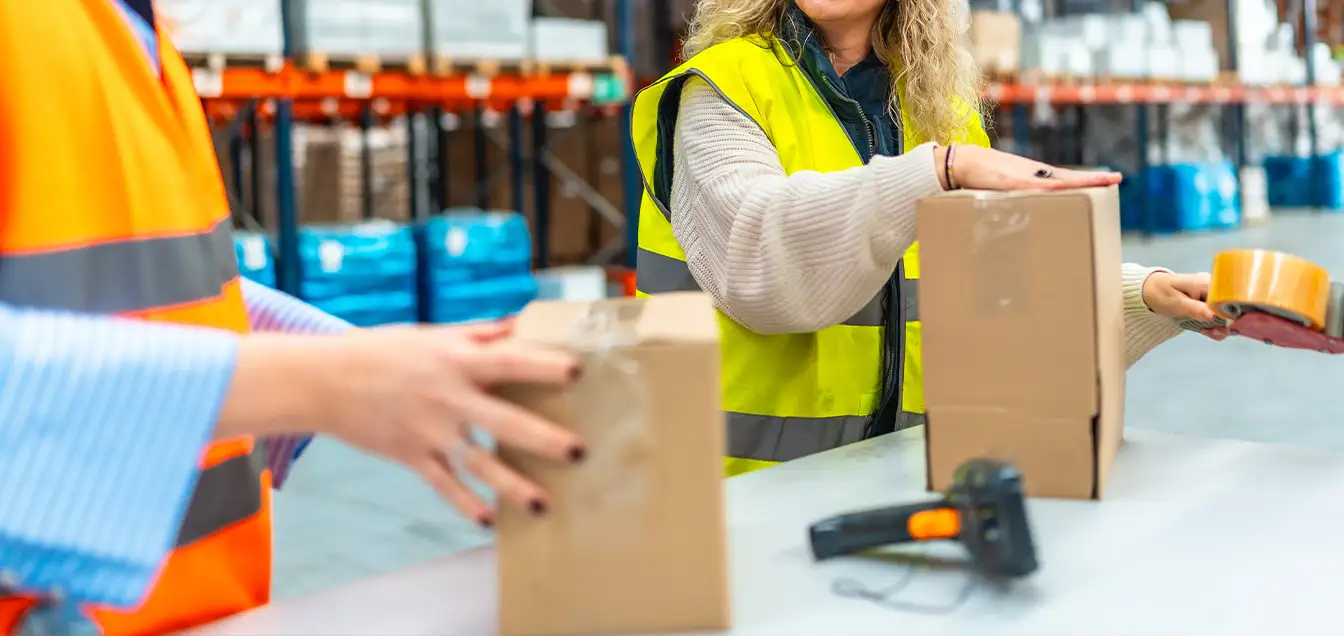Amazon’s order fulfillment service is an essential resource for both small and large sellers seeking to optimize their logistics operations. By taking advantage of Amazon’s extensive logistics network, sellers can concentrate on their primary business activities while the platform manages the daily tasks related to delivering customer orders. This comprehensive guide will explore all facets of Amazon’s order fulfillment service, with a particular focus on the Canadian market, where both opportunities and distinct challenges arise. We will examine the intricacies of costs, services, specific fulfillment centers, and how this option stacks up against other logistics solutions. Let’s dive into everything you need to understand about Amazon’s order fulfillment service.
Table of Contents
What Is Fulfilled by Amazon?
Fulfillment by Amazon is a service that allows sellers to utilize Amazon’s fulfillment centers to store their inventory. Once an order is placed, Amazon takes full responsibility for picking, packing, and shipping the product to the customer. This service not only helps sellers reach a wider audience but also provides the right to display the Amazon Prime badge on their products, making them more appealing to potential buyers.
For many sellers, particularly those who lack warehouse space or infrastructure, Amazon’s fulfillment services provide a straightforward solution that combines efficiency with low operational overhead. According to a 2023 survey of e-commerce retailers, over 70% of respondents cited faster shipping as a significant benefit of using Amazon Canada fulfillment services.
Amazon Fulfillment Cost
Understanding the costs associated with Fulfillment by Amazon is paramount for anyone considering this service. The fees can vary based on several factors like size, weight, and seasonality. Here, we provide a detailed overview of the Amazon Fulfillment costs.
Fees Breakdown
There are two main types of fees associated with Fulfillment by Amazon: fulfillment fees and storage fees.
- Fulfillment Fees: This is charged per unit sold and varies depending on the size of the item.
- Monthly Storage Fees: This fee is based on how much space your inventory occupies in Amazon’s warehouse.
- Additional Fees: These can include long-term storage fees for items stored for more than 365 days, and removal fees if you choose to take back unsold inventory.
Example of Fee Structure:
|
Fee Type |
Standard Size (per unit) |
Oversized Size (per unit) |
Monthly Storage (per cubic foot) |
|
Fulfillment Fee |
$2.50 |
$8.25 |
|
|
Monthly Storage Fee |
$0.75 |
$0.48 |
$0.15 |
|
Long-Term Storage Fee |
$6.90 |
$3.45 |
|
|
Removal Fee |
$0.50 |
$0.50 |
Based on this fee structure, sellers should regularly assess their inventory levels and turnover rates to avoid unnecessary costs. It’s crucial for businesses to conduct thorough financial modeling to assess their total fulfillment costs.
Fulfillment by Amazon Canada
Fulfillment by Amazon Canada is growing exponentially. It offers Canadian sellers an opportunity to leverage Amazon’s vast logistics network to access local, as well as global markets effectively. With the rise of e-commerce in Canada, Amazon’s fulfillment services are becoming an indispensable tool for many sellers.
Benefits of Using Fulfillment by Amazon in Canada
- Market Access: Canadian sellers can reach millions of potential buyers through Amazon’s platform.
- Localized Logistics: Amazon Canada utilizes regional fulfillment centers to ensure faster delivery.
- Cost Efficiency: By outsourcing fulfillment to Amazon, sellers can reduce overhead costs associated with warehousing and shipping.
- Enhanced Customer Trust: Products fulfilled by Amazon often convert better due to the reliability and customer service reputation of Amazon.
The Canadian market has specific nuances that require sellers to adapt their strategies. For instance, localized advertising and understanding regional customer preferences can significantly boost product performance.
Amazon Fulfillment Centre Ottawa

One of the key Amazon Fulfillment Centres in Canada is located in Ottawa. This center plays a significant role in serving the Ontario market and acts as a hub for various regional deliveries.
Features of the Ottawa Fulfillment Centre:
- Strategic Location: Its position allows for quicker shipping to a vast number of potential customers.
- Inventory Management: Sellers leveraging this center can enjoy streamlined inventory management through Amazon’s integrated technology.
- Integration with Amazon Marketplace: Products stored in this center can easily be listed on Amazon.ca, enhancing visibility.
According to a report published by Amazon in 2022, the Ottawa Fulfillment Centre significantly reduced average shipping times in Ontario by 25%, fostering greater seller success and customer satisfaction.
Fulfilled by Amazon Return Policy
An essential component of any e-commerce strategy is handling returns. Amazon’s return policy is particularly customer-friendly, which can enhance customer loyalty. However, this ease of return can come at a cost to sellers.
Key Points of the Return Policy:
- Easy Returns for Customers: Customers can return items within 30 days, often with no questions asked.
- Professional Returns Handling: Amazon manages the entire return process, including customer service inquiries and return label generation.
- Return Fees for Sellers: Each returned item can incur a return processing fee, further emphasizing the importance of managing inventory and understanding product profitability.
Sellers must anticipate returns as a part of their business model and factor those costs into their pricing strategy. Having quality products and excellent customer service can diminish return rates, ensuring sustainability.
Comparing Fulfillment Services
When considering Fulfillment by Amazon, it is essential to compare it with other fulfillment services available on the market. Different solutions may be better suited for different businesses. Here are some alternatives worth considering:
- ShipBob:
ShipBob excels in providing fulfillment services for e-commerce businesses with a focus on tech-enabled logistics and transparency in shipping costs. - Shopify Fulfillment Network:
Shopify is rapidly expanding its fulfillment network, providing a great option for Shopify store owners who wish to remain under one platform. - DelGate:
DelGate offers a range of fulfillment services with a strong emphasis on cost efficiency and streamlined shipping processes for e-commerce businesses. - Canpar Express:
This courier service offers fulfillment and shipping options for Canadian businesses, focusing on competitive pricing and local delivery. - Canada Post:
They provide various shipping and fulfillment solutions, making it a good option for small businesses looking for reliable logistics.
When comparing these options to Fulfillment by Amazon, businesses should consider factors such as costs, geographical reach, ease of integration with their online stores, and options like Third-party Logistics Canada.
Vancouver’s Amazon Fulfillment Centre

The Vancouver fulfillment center is another critical element in Amazon’s strategy for serving Canadian sellers. This center enhances the speed and reliability of service for sellers targeting West Coast markets.
Benefits of the Vancouver Centre:
- Proximity to Major Ports: This fulfillment center’s location is ideal for importing goods from the Asia-Pacific region.
- Fast Shipping Times: Sellers can provide offers that capitalize on the fastest shipping in Canada, improving customer satisfaction.
- Access to Local Market Research: By leveraging data analytics from the Vancouver center, sellers can gain insights into customer preferences in Western Canada.
A case study conducted by an e-commerce seller using the Vancouver Fulfillment Centre indicated that average shipping times improved from 5 days to just 2 days when using FBA, highlighting the benefits of location and operational efficiency.
Ultimate Guide to Fulfillment Services in Canada
This guide serves as an ultimate roadmap for understanding fulfillment services available in Canada, especially within the realm of Fulfillment by Amazon.
Additional Considerations for Canadian Sellers:
- Sales Tax Compliance: Understanding PST and GST regulations is essential for sellers to remain compliant when using fulfillment services.
- Multi-Channel Fulfillment: Sellers often expand their reach by selling on their platforms while still utilizing Fulfillment by Amazon for logistics.
In 2022, a survey indicated that 47% of e-commerce sellers in Canada are opting to leverage multi-channel fulfillment, underlining the need for strategic diversification.
Order Fulfillment Technology
The technology behind order fulfillment is continuously evolving, and Fulfillment by Amazon is at the forefront of these developments.
Key Technologies Used:
- Warehouse Management Systems (WMS): Ensure that inventory levels are accurately tracked and managed.
- Real-Time Tracking: Sellers can see where their packages are in the supply chain and provide customers transparent updates.
- API Integration: Sellers can easily integrate their e-commerce platforms with Amazon’s fulfillment system for automatic updates.
The efficiency gained from these technologies significantly alleviates the administrative burdens sellers typically face.
Section 321 Fulfillment
Section 321 Fulfillment refers to a U.S. customs provision that allows for streamlined import processes for low-value shipments. It’s essential for Canadian sellers who wish to enter the U.S. market through Fulfillment by Amazon.
Benefits of Section 321 Fulfillment:
- Lower Duties: Goods under a specific value can enter the U.S. without incurring significant duties.
- Simplified Process: This provision accelerates the shipping and clearance processes for sellers using Fulfillment by Amazon for cross-border sales.
By taking advantage of Section 321, sellers can better manage their operational costs and improve margins, especially for products sold in the U.S.
How to Get the Best out of Fulfillment by Amazon
Achieving success in e-commerce through Amazon’s fulfillment services involves careful planning and execution of strategies that cater to the Amazon ecosystem. Here are some actionable tips to help you maximize your returns, including fulfillment services Canada:
- Choose products with high demand and competitive prices.
- Optimize your product listings and product images for Amazon’s best practices.
- Use Amazon advertising and other sponsored marketing options effectively.
- Utilize analytics and reporting tools to track your performance and stay ahead of the competition.
Tips for Fulfillment by Amazon sellers:
- Keep your inventory organized, and always monitor stock levels.
- Use Amazon’s integrated shipping services to streamline the shipping process.
- Monitor and adjust your pricing strategy to stay competitive.
- Stay up-to-date with Amazon’s policies and any changes to the seller terms.
Tips for Fulfillment by Merchant (FBM) Sellers:
- Invest in efficient and reliable third-party logistics providers to ensure faster shipping times.
- Maintain accurate inventory records to prevent stockouts and overstocking.
- Develop strong supplier relations to source products at the right price.
- Implement effective customer service strategies to build trust and loyalty.
By following these actionable tips, you can effectively leverage Fulfillment by Amazon or Fulfillment by Merchant to achieve your business goals and stay ahead in the competitive e-commerce landscape.
How to Use Fulfillment by Amazon for Cross-Border Sales

Amazon offers an incredible opportunity for cross-border sales between the U.S. and Canada. By partnering with Fulfillment by Amazon, Canadian businesses can access a wider market of U.S. customers and capitalize on growing demand for e-commerce.
How Cross-Border Sales Work:
- Choose Your Market: Decide whether you want to sell in the U.S. or vice versa and set up the necessary store and inventory management tools.
- Set Up Fulfillment By Amazon: Sign up and set up your fulfillment account to ensure your inventory is stored in Amazon’s fulfillment centers in the country you wish to sell.
- Optimize Your Listings: Use targeted advertising, product optimization, and A+ Content to increase visibility and improve product performance in the desired market.
- Monitor Performance: Use performance analytics and Amazon’s reporting tools to stay up-to-date with your product sales, shipping times, and customer satisfaction.
Benefits of Cross-Border Sales:
- Increased Market Reach: Expand your business beyond the Canadian market and reach a larger customer base.
- Improved Brand Exposure: Establish brand presence in the U.S. and grow your reputation among a new audience.
- Enhanced Competitiveness: Compete more effectively in a larger market and stay ahead in your industry.
Additional Tips for Cross-Border Sellers:
- Understand Cross-Border Regulations: Familiarize yourself with U.S.-Canada trade agreements and any relevant taxes, duties, and shipping restrictions.
- Monitor Currency and Duty Fees: Regularly update your pricing to accommodate fluctuating currency values and duty fees.
- Develop Cross-Border Marketing Strategies: Use targeted advertising, content creation, and social media marketing to effectively reach U.S. customers.
- Improve Product Adaptation: Tailor your products to the U.S. market by modifying packaging, labeling, and any applicable product features or descriptions to meet U.S. regulations.
By taking these steps, you can expand your business into the U.S. market through cross-border sales with Amazon’s fulfillment services.
How to Set Up Fulfillment by Amazon in Canada
Setting up Fulfillment by Amazon (FBA) in Canada can be a streamlined process if you follow the right steps. Here’s a straightforward guide to help you navigate the setup:
Step-by-Step Instructions:
- Sign Up for an Amazon Seller Account: To start utilizing FBA in Canada, the first step is to create your Amazon business account.
- Set Up Your Fulfillment Account: Next, you need to establish your FBA account. This includes configuring payment options and tax settings according to Amazon’s guidelines.
- Send Inventory to the Amazon Fulfillment Centre: Prepare to send your products to one of Amazon’s fulfillment centers in Canada, where they will be stored until orders are placed.
- Choose Your Fulfillment Options: Decide on your fulfillment preferences, which encompass packaging standards, shipping methods, and return protocols.
- Monitor Your Inventory: Keep a close eye on your inventory levels to ensure you’re meeting customer demand. Adjust your stock as necessary to avoid running low or overstocking.
By carefully following these steps and aligning with Amazon’s requirements, you’ll effectively set up their fulfillment services Canada.
How to Measure the Effectiveness of Fulfillment by Amazon
To get the best results from Amazon’s fulfillment services, it’s vital to assess and measure their effectiveness. Here are key performance metrics to consider:
- Fulfillment Rate: This metric represents the percentage of orders successfully fulfilled and delivered on schedule.
- Customer Satisfaction: Gather insights through customer surveys, reviews, and tracking return rates to gauge overall satisfaction.
- Shipping Speed: Analyze your shipping times and compare them with competitors to see how you stack up.
- Returns and Refunds: Review the frequency of returns, the number of refunds issued, and any costs tied to these processes.
- Profitability: Evaluate your business’s profitability by comparing revenue generated against the costs associated with using FBA.
How to Calculate Your Fulfillment by Amazon Performance Metrics:
- Use Amazon’s Performance Metrics: Access a range of performance metrics provided by Amazon, such as customer satisfaction scores and shipping speed, through your seller dashboard.
- Integrate Third-Party Tools: Consider employing third-party software to harness more in-depth insights into your FBA performance via Amazon performance reports and inventory tracking tools.
- Monitor Returns and Refunds: Utilize Amazon’s returns processing fee calculator to keep tabs on returns and their associated costs effectively.
- Conduct Regular Performance Audits: Implement regular performance audits to evaluate your metrics, spot areas needing improvement, and make informed operational decisions.
By actively tracking and analyzing these performance metrics, you can refine your FBA strategy to enhance your returns.
Tips to Improve Your Performance Metrics:
- Monitor Inventory Levels: Keeping accurate stock records is crucial to avoid stockouts, which can hinder sales, or overstocking, which can increase costs.
- Adapt Your Products to Meet Customer Demand: Stay attuned to evolving customer preferences by reviewing market trends and adjusting your product offerings and prices accordingly.
- Invest in Efficient Logistics: Look for ways to optimize your shipping process and take advantage of Amazon’s integrated shipping solutions to cut down on expenses.
- Improve Communication with Amazon: Establish robust communication pathways with Amazon’s support team to quickly resolve issues and reduce potential downtime.
Bonus Tips for Improving Customer Satisfaction:
- Invest in Quality Control: Make it a point to inspect your products thoroughly before shipping to minimize defects and enhance customer trust.
- Provide Transparent Product Information: Clearly label your products and provide detailed descriptions to avoid confusion and boost customer satisfaction.
- Develop Customer Support Resources: Create comprehensive support documents to assist customers with their inquiries and troubleshoot issues swiftly.
- Monitor Customer Feedback: Regularly review customer reviews and feedback to identify trends and areas needing enhancement.
Conclusion
This detailed guide has offered valuable insights into Fulfillment by Amazon, covering its benefits, costs, services, and performance metrics. By grasping the nuances of FBA and leveraging its features, you can unlock your e-commerce potential and expand your business. Remember to continuously monitor your performance metrics and stay updated on Amazon’s policies to ensure your business thrives.





